Rubberwood comes from the rubber tree (Hevea brasiliensis), which is mainly grown on plantations in southeast Asia. The rubberwood tree produces a latex sap and is the world’s main producer of natural rubber; once the tree is no longer able to supply latex, it is harvested for its wood. The resulting lumber is light-coloured and therefore easy to stain a variety of colours, from natural to dark. Rubberwood is also known as Malaysian oak, white teak, parawood or Hevea wood. Its grain is similar to oak's. Refinishing rubberwood furniture can be easy with the right preparation, materials and a little elbow grease.
- Rubberwood comes from the rubber tree (Hevea brasiliensis), which is mainly grown on plantations in southeast Asia.
- The rubberwood tree produces a latex sap and is the world’s main producer of natural rubber; once the tree is no longer able to supply latex, it is harvested for its wood.
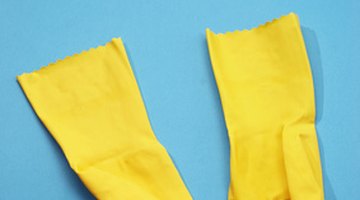
Choose a work spot in a garage, on a patio or in a well-ventilated area and cover your work area with newspapers or a dust sheet. Put on chemical-resistant rubber gloves and safety glasses.
Apply the chemical stripper to your furniture; if it is a large piece, you may want to strip it in sections. Be sure to follow the directions on the chemical stripper label. It is best to apply a thick coat of stripper--don’t worry about spreading the chemical evenly. Most chemical strippers will soften the finish within 10 to 30 minutes.
- Apply the chemical stripper to your furniture; if it is a large piece, you may want to strip it in sections.
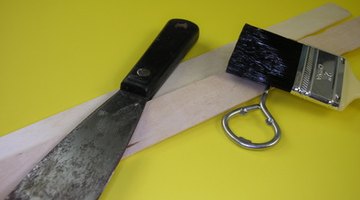
Remove the softened finish. A scraper works best on the flat parts of furniture, while an abrasive pad or stiff bristle brush works best on raised or curved areas.
You may need to repeat steps two and three to completely remove all the finish from your rubberwood furniture.
Clean off any residue from the stripper using lacquer thinner and an abrasive pad. Wipe the wood down with more lacquer thinner and heavy duty paper towelling or clean cotton cloths.
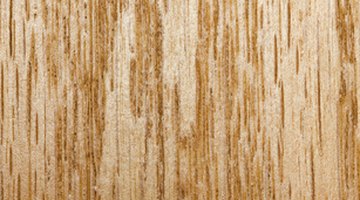
Allow the wood to dry thoroughly. This will take at least overnight.
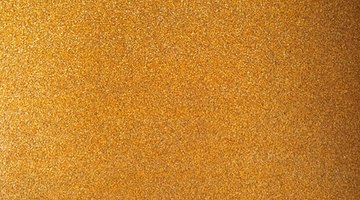
Prepare your rubberwood furniture for its new finish by going over any rough spots, first with a medium-grade (#120) sandpaper, then with a fine-grade (#220) sandpaper. Be sure to follow the wood grain. Remove any dried glue, especially around joint areas, as those spots will not absorb a wood stain. Once the wood is uniformly smooth, go over it with a lint-free cloth to remove any sanding dust.
- Clean off any residue from the stripper using lacquer thinner and an abrasive pad.
- Remove any dried glue, especially around joint areas, as those spots will not absorb a wood stain.
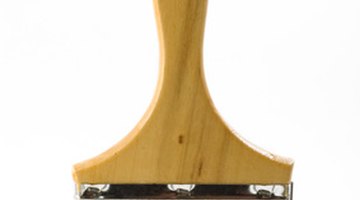
Apply an oil-based pre-stain wood conditioner, brushing in the direction of the grain. After 15 minutes, wipe off the excess with a clean lint-free rag. Be ready to apply the stain--most pre-stain wood conditioner manufacturers recommend applying stain no more than two hours after the conditioner.
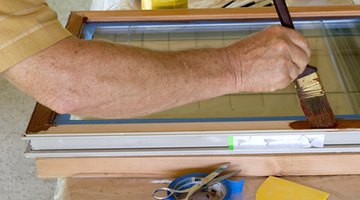
Stain your rubberwood furniture according to the directions on your oil-based stain. You can test a small area of the wood to make sure you like the result. Then stain the whole piece of furniture, brushing in the direction of the grain. Once the stain has soaked into the wood (usually 5 to 15 minutes), wipe off the extra liquid with a cloth. If you would like the stain a little darker, follow application directions and apply a second coat.
- Apply an oil-based pre-stain wood conditioner, brushing in the direction of the grain.
- If you would like the stain a little darker, follow application directions and apply a second coat.
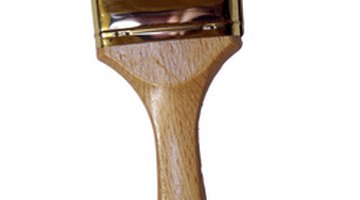
After the stain has dried (drying time will vary according to manufacturer and conditions), apply a coat of protective finish.
TIP
Always read label directions when using chemical stripper, wood stain and protective finish. Be sure your pre-stain wood conditioner and wood stain are both oil based. Do not use a water-based pre-stain wood conditioner and an oil-based wood stain.
WARNING
Be sure to work in a well-ventilated area when applying chemical stripper, wood stain and protective finish. Wear rubber gloves and protective glasses when you refinish furniture.
